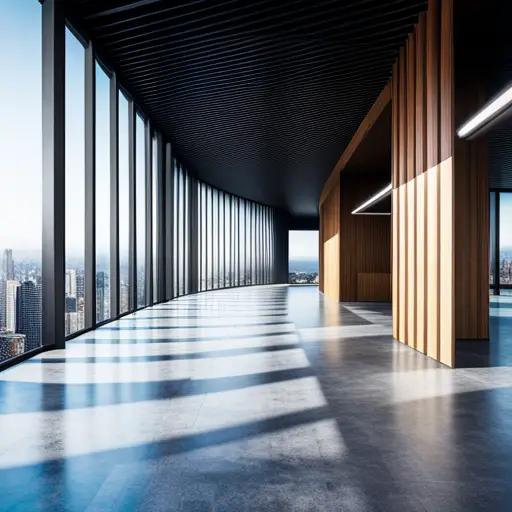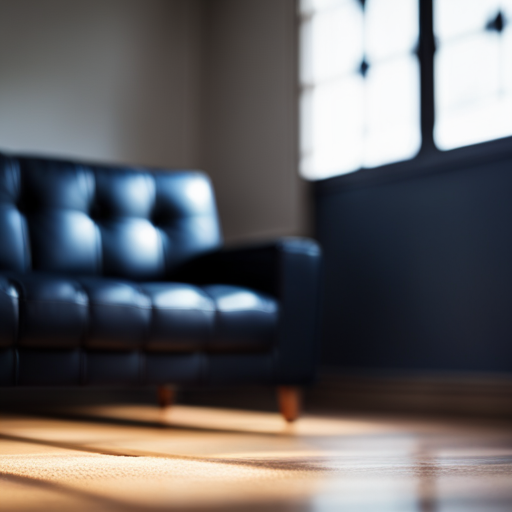Flooring Trends in Commercial Spaces

While some may view commercial flooring as purely utilitarian, the evolving trends in commercial spaces prove otherwise. With an emphasis on durability, sustainability, and aesthetic appeal, modern commercial flooring options offer a perfect blend of functionality and style.
From eco-friendly materials to innovative designs, the latest trends cater to the diverse needs of commercial spaces, providing a seamless balance of form and function.
Durable Flooring Materials
When considering durable flooring materials for commercial spaces, it is essential to prioritize longevity, resistance to heavy foot traffic, and ease of maintenance. Resilient surfaces that can withstand the demands of high-traffic areas are crucial. Long-lasting options such as luxury vinyl tile (LVT), porcelain tile, and epoxy flooring are popular choices in commercial settings due to their durability.
LVT is known for its ability to mimic the look of natural materials while providing exceptional durability, making it a cost-effective option for businesses. Porcelain tile, on the other hand, offers a long-lasting solution with minimal maintenance requirements, making it ideal for areas with high foot traffic. Additionally, epoxy flooring creates a seamless and durable surface that is resistant to stains and easy to clean, making it a practical choice for commercial environments.
Transitioning to eco-friendly options, it is important to consider not only durability but also sustainability when selecting flooring materials for commercial spaces.
Eco-Friendly Options
Transitioning to eco-friendly options, businesses should consider sustainability alongside durability when selecting flooring materials for commercial spaces. Bamboo flooring is an excellent eco-friendly option due to its rapid renewability and low environmental impact. Bamboo is a fast-growing grass that can be harvested without killing the plant, making it a sustainable choice. It also offers durability comparable to hardwood.
Another eco-friendly option is flooring made from recycled materials. These materials can include recycled wood, rubber, glass, and even plastic. By utilizing recycled materials, businesses can reduce waste and environmental impact while still achieving a stylish and functional flooring solution. Additionally, recycled materials often provide a unique and artistic flair to commercial spaces.
When choosing eco-friendly flooring options, it’s essential to ensure that the products meet the necessary standards for commercial use and are installed correctly to maximize their longevity and performance.
As businesses strive to create environmentally responsible and aesthetically pleasing commercial spaces, the next section will explore the modern color trends in flooring design.
Modern Color Trends
Incorporating modern color trends into commercial flooring can significantly enhance the visual appeal and overall ambiance of eco-friendly spaces, ensuring a harmonious blend of sustainability and aesthetics. When considering modern color trends for commercial flooring, it’s essential to keep in mind the following key points:
-
Custom Patterns: Embracing custom patterns in flooring design allows for unique and personalized touches that can elevate the overall aesthetic of commercial spaces. Whether it’s geometric shapes, abstract designs, or branded patterns, customizing the flooring adds a distinct visual appeal.
-
Neutral Palettes: Neutral color palettes continue to dominate modern commercial spaces, offering a timeless and versatile foundation for interior design. Incorporating shades of gray, beige, and soft pastels can create a sophisticated and calming environment while providing flexibility to complement various decor styles.
-
Texture Play: Incorporating textures into flooring design adds depth and visual interest to commercial spaces. From sleek and polished finishes to rustic and tactile surfaces, the interplay of textures can create dynamic visual effects.
-
Bold Accents: While neutral palettes are favored, introducing bold accent colors in flooring design can make a striking statement and infuse energy into commercial spaces. Selecting vibrant hues strategically can add personality and visual intrigue to the overall design scheme.
Innovative Designs
Building upon the emphasis on modern color trends in commercial flooring, innovative designs play a pivotal role in creating dynamic and visually engaging spaces. Innovative patterns have become increasingly popular in commercial flooring, offering unique and eye-catching options for businesses looking to make a statement with their interior design. From geometric shapes to abstract art-inspired motifs, these innovative patterns add a sense of creativity and personality to commercial spaces, making them stand out from traditional designs.
In addition to innovative patterns, customized finishes have also gained traction in the commercial flooring industry. Businesses now have the opportunity to tailor their flooring finishes to align with their brand identity and overall aesthetic. Whether it’s a sleek metallic finish for a modern, industrial look or a custom-printed design that reflects the company’s logo or theme, customized finishes allow for a truly personalized touch in commercial spaces.
Innovative designs not only elevate the visual appeal of commercial spaces but also contribute to a memorable and immersive experience for employees, clients, and visitors. As the demand for unique and customizable flooring options continues to grow, innovative designs are expected to remain a prominent trend in commercial interior design.
Functional and Stylish Solutions
Functional and stylish solutions in commercial flooring are essential for creating professional and versatile spaces that meet the practical needs of businesses while maintaining a contemporary aesthetic. When considering functional design and sustainable solutions in commercial flooring, there are several key aspects to take into account:
-
Durability: Commercial spaces experience heavy foot traffic, so it’s crucial to choose flooring materials that can withstand constant use without showing signs of wear and tear.
-
Safety: The flooring should provide a safe and slip-resistant surface, especially in areas where spills or moisture are common.
-
Environmental Impact: Sustainable solutions such as using recycled materials or choosing flooring options with low VOC emissions can contribute to a healthier indoor environment and demonstrate a commitment to environmental responsibility.
-
Aesthetic Appeal: While functionality is paramount, the flooring should also enhance the overall design of the space, contributing to a professional and visually appealing environment.
Frequently Asked Questions
How Do Flooring Trends in Commercial Spaces Differ From Residential Spaces?
Commercial and residential flooring trends differ in design, material durability, and maintenance requirements. Design considerations in commercial spaces prioritize functionality and durability, while residential spaces may focus more on aesthetic appeal and comfort.
What Are the Most Cost-Effective Flooring Options for High-Traffic Commercial Areas?
There is a growing demand for cost-effective flooring options in high-traffic commercial areas. Eco-friendly flooring, such as bamboo or cork, offers durability and low maintenance costs, making it an attractive choice for businesses seeking long-term value.
Are There Any Regulations or Standards for Flooring Materials in Commercial Spaces?
Regulatory standards for flooring materials in commercial spaces are essential to ensure safety, durability, and environmental impact. Compliance with these standards is crucial in meeting safety considerations and environmental requirements for the well-being of occupants and the environment.
How Can Flooring Choices Impact the Acoustics and Sound Control in a Commercial Environment?
Flooring choices significantly impact acoustics in commercial spaces. Proper acoustic performance from flooring materials enhances productivity by reducing noise levels, creating a conducive work environment. Implementing sound control measures can improve employee satisfaction and overall business performance.
What Are the Best Flooring Options for Spaces With Specific Needs, Such as Healthcare Facilities or Restaurants?
When considering flooring options for specific needs in spaces such as healthcare facilities or restaurants, it is crucial to prioritize durability and hygiene. For healthcare facilities, antimicrobial and easy-to-clean flooring is essential, while restaurants may benefit from slip-resistant and easy-to-maintain options.
Conclusion
In conclusion, the flooring trends in commercial spaces are evolving to focus on:
- Durable materials
- Eco-friendly options
- Modern color trends
- Innovative designs
These trends offer functional and stylish solutions for businesses. As the demand for sustainable and visually appealing flooring continues to grow, businesses are embracing these trends to create a more welcoming and professional environment for their customers and employees.
Like a breath of fresh air, these trends bring new life and energy into commercial spaces.

Rubin Everest, a seasoned expert in the world of flooring, brings a wealth of knowledge and passion to the surface. As the mind behind ebbow.com, Rubin is dedicated to sharing insights on the latest trends, innovative solutions, and expert advice in the realm of flooring. Whether you’re seeking practical tips for installation or design inspiration, Rubin Everest is your go-to source for all things flooring-related, making your journey to the perfect floor an informed and enjoyable experience.





